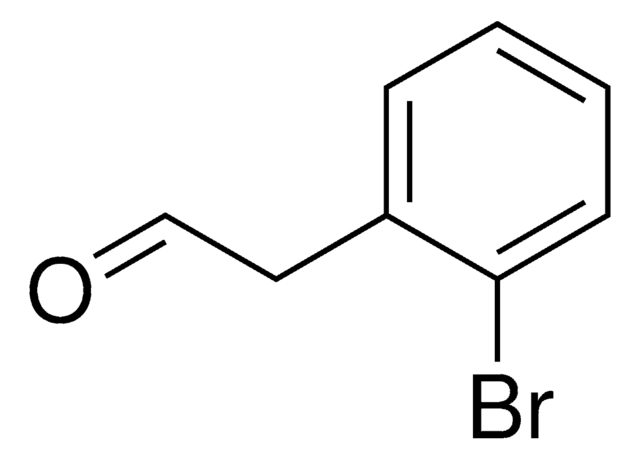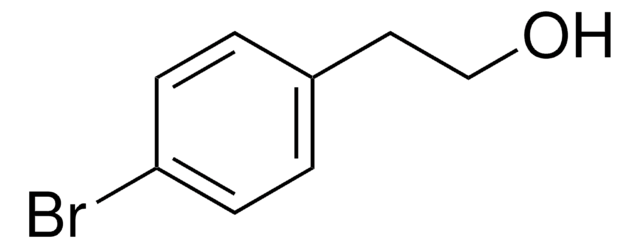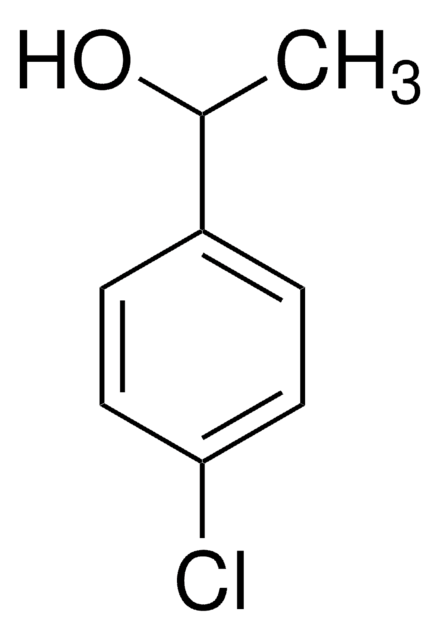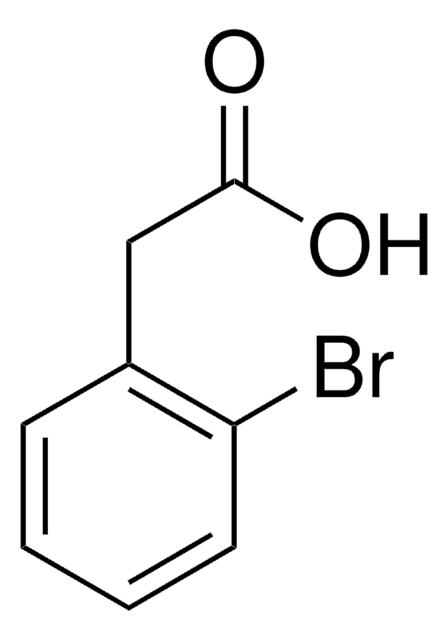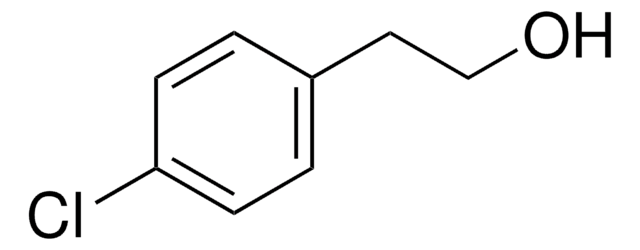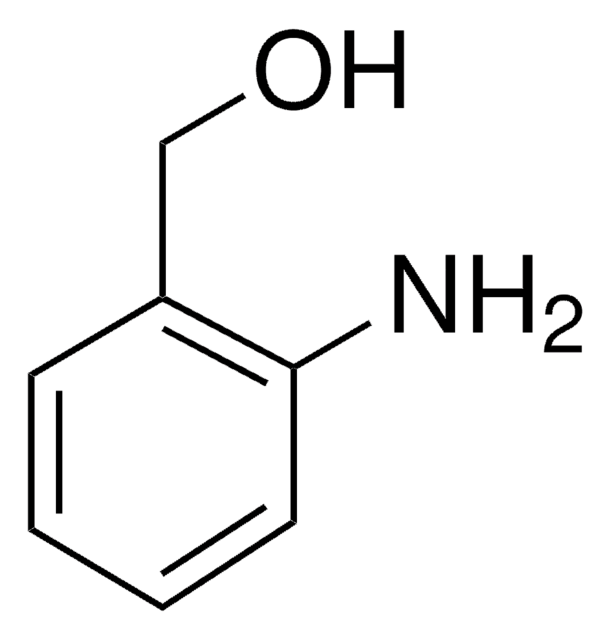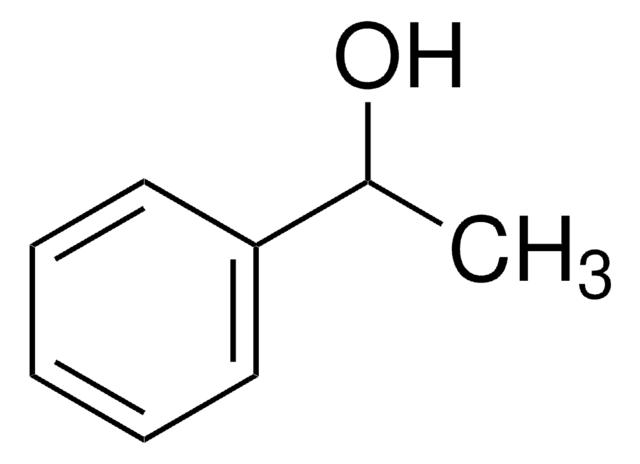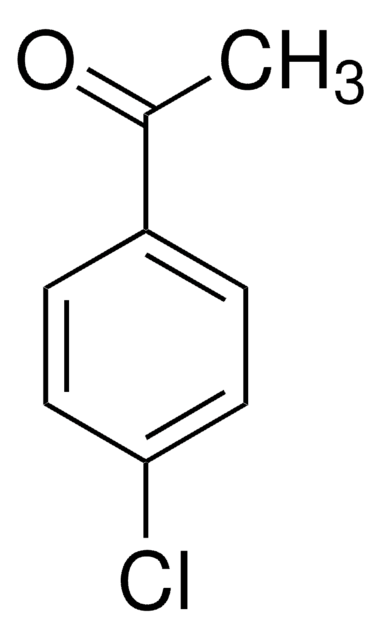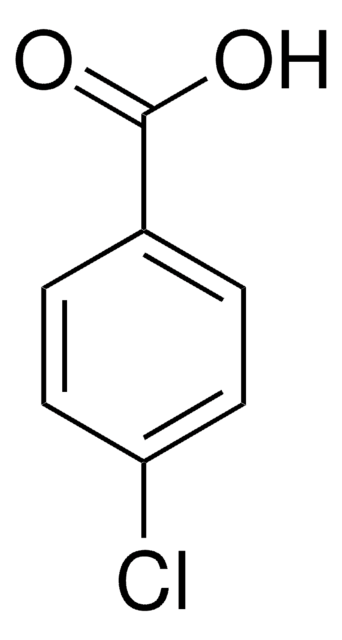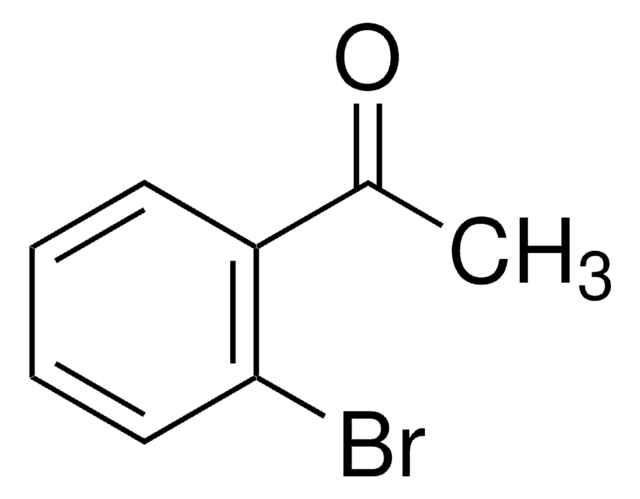Wszystkie zdjęcia(1)
Key Documents
About This Item
Wzór liniowy:
BrC6H4CH2CH2OH
Numer CAS:
Masa cząsteczkowa:
201.06
Numer MDL:
Kod UNSPSC:
12352100
Identyfikator substancji w PubChem:
NACRES:
NA.22
Polecane produkty
Poziom jakości
Próba
99%
współczynnik refrakcji
n20/D 1.577 (lit.)
tw
97 °C/0.7 mmHg (lit.)
gęstość
1.483 g/mL at 25 °C (lit.)
grupa funkcyjna
bromo
hydroxyl
ciąg SMILES
OCCc1ccccc1Br
InChI
1S/C8H9BrO/c9-8-4-2-1-3-7(8)5-6-10/h1-4,10H,5-6H2
Klucz InChI
ADLOWZRDUHSVRU-UHFFFAOYSA-N
Powiązane kategorie
Opis ogólny
2-Bromophenethyl alcohol is a phenethyl alcohol derivative. It participates in the preparation of novel P-chirogenic phosphines with a sulfur-chelating arm (P*,S-hybrid ligand).
Zastosowanie
2-Bromophenethyl alcohol is used as an end capping reagent during the synthesis of rod-coil block copolymers and also as a test compound in the study to evaluate the potential Aedes aegypti repellent chemotype.
This page may contain text that has been machine translated.
Kod klasy składowania
10 - Combustible liquids
Klasa zagrożenia wodnego (WGK)
WGK 3
Temperatura zapłonu (°F)
Not applicable
Temperatura zapłonu (°C)
Not applicable
Środki ochrony indywidualnej
Eyeshields, Gloves
Wybierz jedną z najnowszych wersji:
Masz już ten produkt?
Dokumenty związane z niedawno zakupionymi produktami zostały zamieszczone w Bibliotece dokumentów.
Klienci oglądali również te produkty
Polina V Oliferenko et al.
PloS one, 8(9), e64547-e64547 (2013-09-17)
Molecular field topology analysis, scaffold hopping, and molecular docking were used as complementary computational tools for the design of repellents for Aedes aegypti, the insect vector for yellow fever, chikungunya, and dengue fever. A large number of analogues were evaluated
Modular P-Chirogenic Phosphine-Sulfide Ligands: Clear Evidence for Both Electronic Effect and P-Chirality Driving Enantioselectivity in Palladium-Catalyzed Allylations.
Bayardon J, et al.
Organometallics, 34(17), 4340-4358 (2015)
Wen-Chung Wu et al.
Langmuir : the ACS journal of surfaces and colloids, 23(5), 2805-2814 (2007-01-26)
A combined theoretical and experimental investigation of conjugated rod-coil block copolymer brushes is reported. The theoretical study for the surface structures of rod-coil block copolymer brushes was established based on the simulation method of dissipative particle dynamics. The effects of
Nasz zespół naukowców ma doświadczenie we wszystkich obszarach badań, w tym w naukach przyrodniczych, materiałoznawstwie, syntezie chemicznej, chromatografii, analityce i wielu innych dziedzinach.
Skontaktuj się z zespołem ds. pomocy technicznej